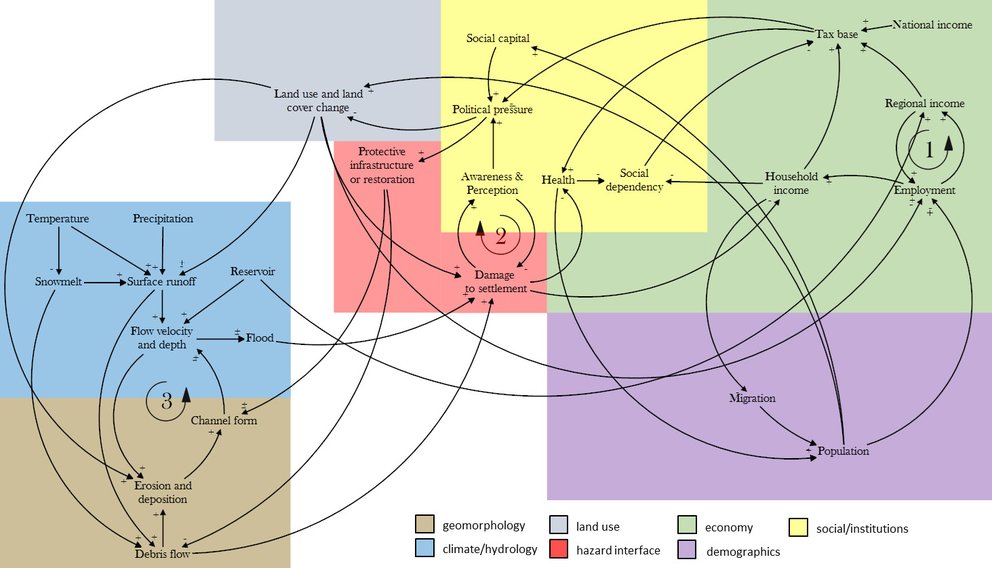Coupled Human-Landscape Systems: Risk & Resilience
Objective
The overall aim of the working group Coupled Human‐Landscape Systems is to combine existing knowledge on risk and resilience of communities from different disciplines and to advance the conceptual model based on Hossain et al. (2020). Through interdisciplinary research we seek to improve the theoretical and empirical understanding of key risk factors and interdependent mechanisms existing within coupled human‐landscape systems in mountain areas. In doing so, we aim to raise awareness on mountain hazards and their impacts on people on the one hand and to provide new and enhanced insights that will support decision-making processes. These aims will be achieved by accomplishing the following objectives:
- Further development of the conceptual model addressing the dynamics of risk and community resilience in greater mountain areas with emphasis on couplings between humans and the landscape.
- Implementing the conceptual model as a comprehensive coupled human-landscape computer model.
- Testing the coupled model on social and physical empirical data of mountain hazards.
- Determine what magnitude and frequency of physical and socio-economic shocks can be absorbed by mountain regions.
- Determine which physical and socio-economic shocks affect mountain communities most.

Figure: Causal loop diagram for a coupled human landscape system for alpine regions (Hossain et al. 2020).
